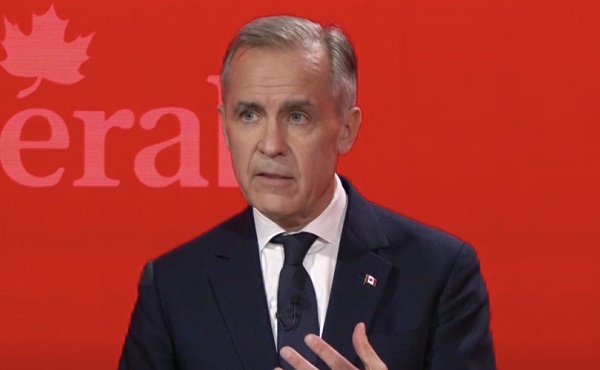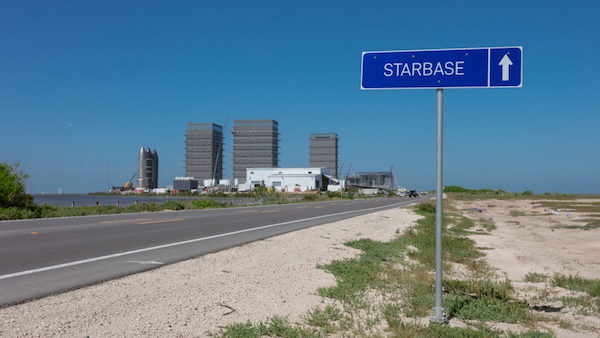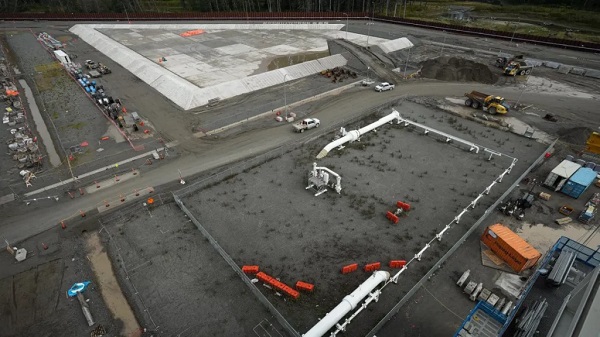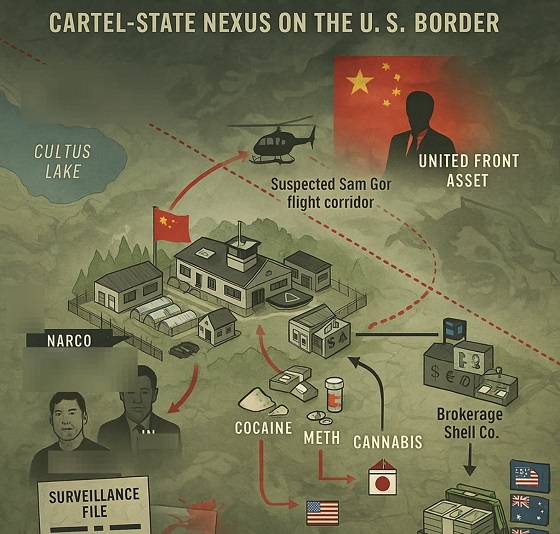Alberta
Protecting vulnerable Albertans this winter

Alberta’s government is investing an additional $21.5 million for Albertans experiencing homelessness and family violence.
The pandemic continues to have a large impact on vulnerable people, and this funding will ensure access to services like 24-7 emergency shelter and support for victims of domestic violence while keeping clients safe.
The government announced this additional support at the Hope Mission at the Herb Jamieson Centre. Alberta’s government fulfilled a platform commitment with $4 million for the centre’s recent construction. This announcement furthers those efforts to support vulnerable people in Alberta.
Alberta’s government is also providing $1.5 million to activate up to 200 additional shelter beds at Commonwealth Stadium and will support on-site overdose prevention and treatment services.
“As we continue to navigate through COVID, one of our top priorities is to make sure all Albertans have a safe place to stay and access to the support they need. Together with the $78 million previously announced by Alberta’s government, this additional funding will help organizations on the front lines deliver the services vulnerable Albertans need.”
“Our community partners are critical to making sure people experiencing homelessness and domestic violence have safe places to stay and where they can still access the supports they need. This funding will go a long way to ensure shelters are providing Albertans with critical supports in a healthy environment.”
“A quick look outside the window, and you’ll see how important this announcement is to the houseless Edmontonians who were looking for a warm place to sleep during this winter. We have identified the shelter gap in recent meetings with the Premier and his ministers, and they have responded by providing emergency funding for the Spectrum shelter, three needed southside shelters and our enhanced capacity emergency shelter at Commonwealth Stadium. We welcome this support and look forward to building on this collaboration to find more permanent and sustained solutions to end houselessness in Edmonton.”
“The Calgary Drop-In Centre has been on the front line of the COVID-19 pandemic, working with our community partners to decrease the spread within our city’s homeless population. We are grateful to our partners at the Government of Alberta for the additional funding, which will support medical staff and overflow spaces to meet the increased demand at our main shelter.”
“This funding will allow us to maintain extra capacity during the critical winter season. With the unpredictability of COVID-19, we will be able to keep people safe and socially distanced. Thank you to the provincial government for equipping us with extra capacity to serve everyone who needs safe, warm shelter during the cold of Alberta’s winter.”
The $21.5-million funding package will be distributed as follows:
- $13 million for emergency homeless shelters
- $6.5 million for isolation facilities
- $2 million for emergency women’s shelters
Emergency homeless shelters
Funding will support 14 expanded homeless shelter facilities to meet physical distancing requirements. Funding will also support, where possible, 24-7 access to regular meal service, showers, laundry services and connection to addictions and mental health services and housing.
Isolation facilities
Funding will support about 285 isolation spaces in 10 communities. These facilities are a critical component of the shelter pandemic response, and help alleviate pressure in the public health system by helping shelter clients who contract COVID-19 isolate and receive medical care if hospitalization is not required. Additional capacity may be added in some rural communities as needed.
Emergency women’s shelters
This funding will support service delivery adjustments at emergency women’s shelters. Due to the pandemic, there has been an increase in domestic violence across Alberta. This funding will help shelter operators offer more support through community outreach and virtual service delivery as well as hotel isolation, and adjust in-shelter services to align with public health orders.
Quick facts
- This funding guarantees these supports will be in place until March 2022.
- This funding is in addition to $78 million announced in 2020.
- Funding will support emergency homeless shelters in Edmonton, Calgary, Red Deer, Grande Prairie, Medicine Hat, Lethbridge, Lloydminster, Drayton Valley, Leduc, Slave Lake and Wetaskiwin.
- The 10 isolation sites are located in Calgary, Edmonton, Fort McMurray, Grande Prairie, Lethbridge, Medicine Hat, Red Deer, Wetaskiwin, Peace River and Lac La Biche.
- With the additional capacity at Commonwealth Stadium, up to 1,280 emergency shelter beds will be available in Edmonton this winter.
- The shelter is anticipated to be operational in early December once an operator has been selected.
Alberta
Meet Marjorie Mallare, a young woman with a leading role at one of Canada’s largest refineries

Marjorie Mallare at Imperial Oil’s Strathcona refinery.
Fr0m the Canadian Energy Centre
By Cody Ciona
Mallare manages an all-female team of engineers helping keep operations smooth and safe
As the utilities and hydroprocessing technical lead for Imperial Oil’s Strathcona Refinery near Edmonton, 32-year-old Marjorie Mallare and her team help ensure operations run smoothly and safely at one of Canada’s largest industrial facilities.
The exciting part, she says, is that all four engineers she leads are female.
It’s part of the reason Mallare was named one of ten Young Women in Energy award winners for 2025.
“I hope they realize how important the work that they do is, inspiring and empowering women, connecting women and recognizing women in our industry,” she says.
“That can be very pivotal for young women, or really any young professional that is starting off their career.”
Born and raised in the Philippines, Mallare and her family moved to Edmonton near the end of junior high school.
Living in the industrial heartland of Alberta, it was hard not to see the opportunity present in the oil and gas industry.
When she started post-secondary studies at the University of Alberta in the early 2010s, the industry was booming.
“The amount of opportunities, at least when I started university, which was around 2011, was one of the high periods in our industry at the time. So, it was definitely very attractive,” Mallare says.
When choosing a discipline, engineering stood out.
“At the time, chemical engineering had the most number of females, so that was a contributing factor,” she says.
“Just looking at what’s available within the province, within the city, chemical engineering just seemed to offer a lot more opportunities, a lot more companies that I could potentially work for.”
Through work co-ops in oil and gas, her interest in a career in the industry continued to grow.
“It just kind of naturally happened. That drew my interest more and more, and it made it easier to find future opportunities,” Mallare says.
Following a work practicum with Imperial Oil and graduation, she started working with the company full time.
On the side, Mallare has also driven STEM outreach programs, encouraging young women to pursue careers in engineering.
In addition to supporting the Strathcona Refinery’s operations department, Mallare and her team work on sustainability-focused projects and reducing the refinery’s carbon footprint.
The 200,000 barrel per day facility represents about 30 per cent of Western Canada’s refining capacity.
“Eventually, our group will also be responsible for running the new renewable diesel unit that we’re planning to commission later this year,” says Mallare.
Once completed, the $720 million project will be the largest renewable diesel facility in Canada, producing more than one billion litres of biofuel annually.
Projects like these are why Mallare believes Canada will continue to be a global energy leader.
“We’re leading others already with regards to pursuing more sustainable alternatives and reducing our carbon footprints overall. That’s not something we should lose sight of.”
Alberta
Alberta Precipitation Update

Below are my updated charts through April 2025 along with the cumulative data starting in October 2024. As you can see, central and southern Alberta are trending quite dry, while the north appears to be faring much better. However, even there, the devil is in the details. For instance, in Grande Prairie the overall precipitation level appears to be “normal”, yet in April it was bone dry and talking with someone who was recently there, they described it as a dust bowl. In short, some rainfall would be helpful. These next 3 months are fairly critical.
Thanks for reading William’s Substack!
Subscribe for free to receive new posts and support my work.
-

 Energy2 hours ago
Energy2 hours agoIs the Carney Government Prepared to Negotiate a Fair Deal for the Oil, Gas and Pipeline Sectors
-

 Health3 hours ago
Health3 hours agoJay Bhattacharya Closes NIH’s Last Beagle Lab
-

 Business4 hours ago
Business4 hours agoWelcome to Elon Musk’s New Company Town: ‘Starbase, TX’ Votes To Incorporate
-

 Crime2 days ago
Crime2 days agoHow the CCP’s United Front Turned Canada’s Legal Cannabis Market into a Global Narcotics Brokerage Network
-

 Alberta2 days ago
Alberta2 days agoAlberta Precipitation Update
-

 Business24 hours ago
Business24 hours agoFrom ‘Elbows Up’ To ‘Thumbs Up’
-

 Daily Caller2 days ago
Daily Caller2 days agoStates Attempting To Hijack National Energy Policy
-

 Business2 days ago
Business2 days agoReal Challenges Await Carney







